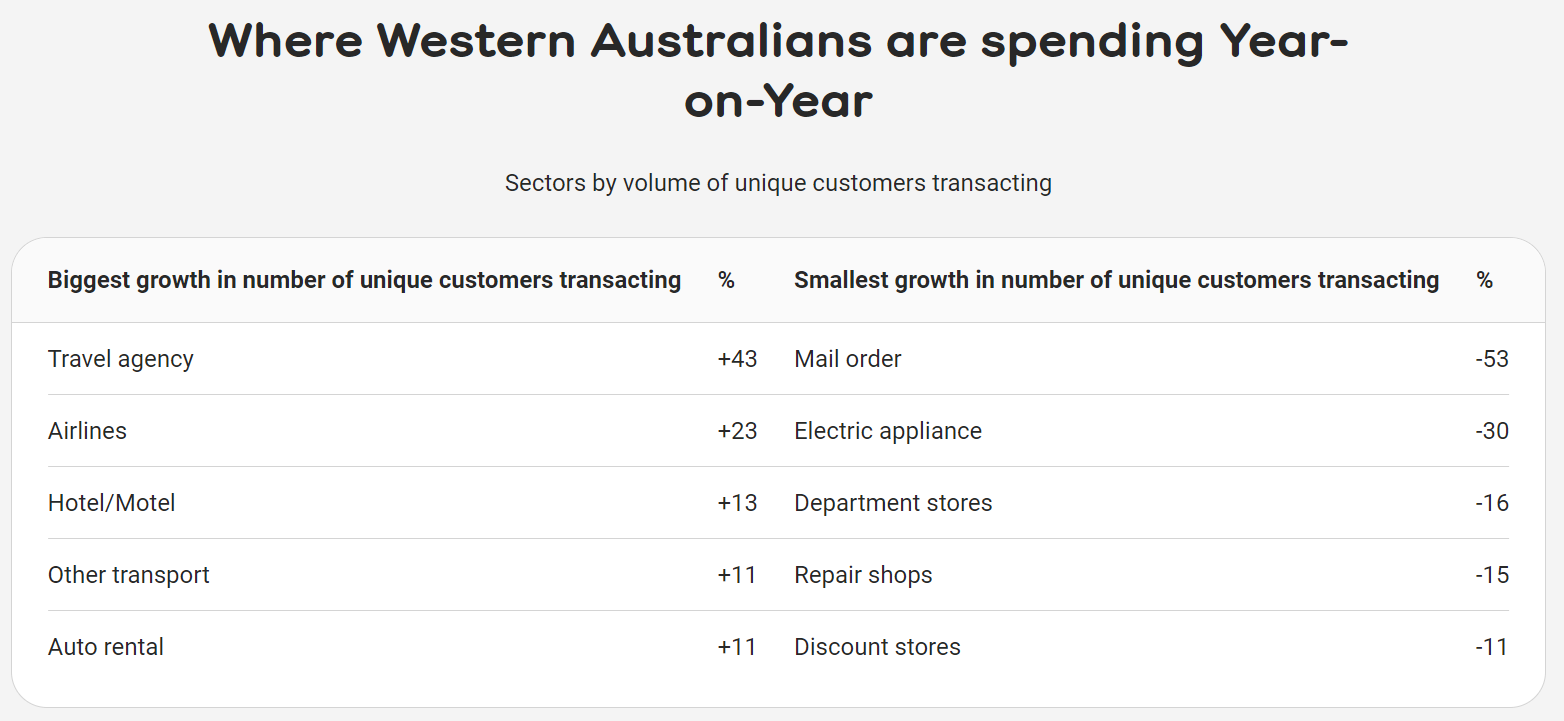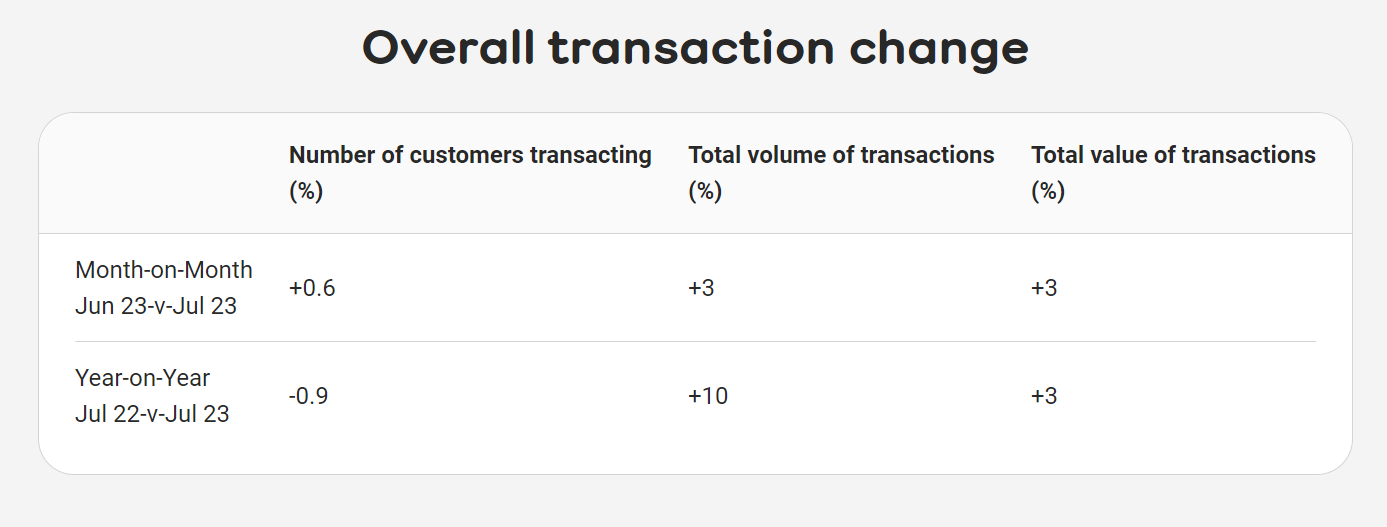

The new financial year has brought a much-welcomed stability for Western Australians, with cost-of-living pressures appearing to ease across nearly all sectors, according to Bankwest’s latest Spend Trends report.
The Bankwest’s Spend Trends report, which tracks WA customer credit and debit activity to provide insights into community responses to economic conditions, revealed that the consistent year-on-year value increases are finally starting to slow.
The number of customers spending in travel-related sectors has continued to grow year-on-year and was the only category that did so in double-figure increases, with customers steady across the board for all other sectors, the Bankwest report showed.

Most sectors saw the average value of transactions stabilise, with only mail order (online shopping, 95%) and electric appliance (32%) spending continuing to post significant cost increases year-on-year.
As for the remaining 22 sectors, most of them posted a single-figure change in the average value of transactions year-on-year, which indicated that prices were either stabilising or reducing, as was the case at the bowser for service stations (-11%).
The gap between the growth in the average value (10%) and volume (3%) of transactions year-on-year, one gauge for cost-of-living pressures, were still close to parity for the fifth month running.
For these two figures to move in parity would be the expectation in an environment of normal cost of living.
In the travel sector, transaction volume continued its year-on-year increase, but previous analysis showed the spending was underpinned and dominated by older West Australians who were less affected by economic pressures.
There have been year-on-year increases in the transaction volumes of travel agency (50%), airline (29%), hotel/motel (29%), other transport (27%), and auto rental (10%) sectors, but they were outweighed by the majority of sectors either falling or stalling.
The Bankwest data showed that the majority of Western Australians had reduced their spending on discretionary sectors, such as department Stores (-13%), sporting/toy stores (-9%), and electric appliances (-7%).

Peter Bouhlas (pictured above), Bankwest general manager of products and digital services, said that while West Australians continued to face cost-of-living pressures across multiple fronts, the figures indicated that some of those pressures could be easing.
“The number of customers spending continues to stall or contract across most sectors and we’re now seeing the average value of transactions similarly decline as that demand for goods and services reduces,” Bouhlas said.
He clarified that these figures do not suggest that the end of the cost-of-living pressures is near. What this recent data suggests is that the “majority of Western Australians are making clear choices on where they spend.”
“The year-on-year stability in the number of customers transacting, from the essential food stores to discretionary sectors such as clothing stores, suggests customers are being more discerning in managing their home budget,” Bouhlas said.
Of course, cost-of-living pressures remain challenging for many people, and for Bankwest customers who feel they need support, the Bankwest leader is encouraging them to contact the bank as soon as possible, so they can “work through their unique circumstances.”
Use the comment section below to tell us how you felt about this.
